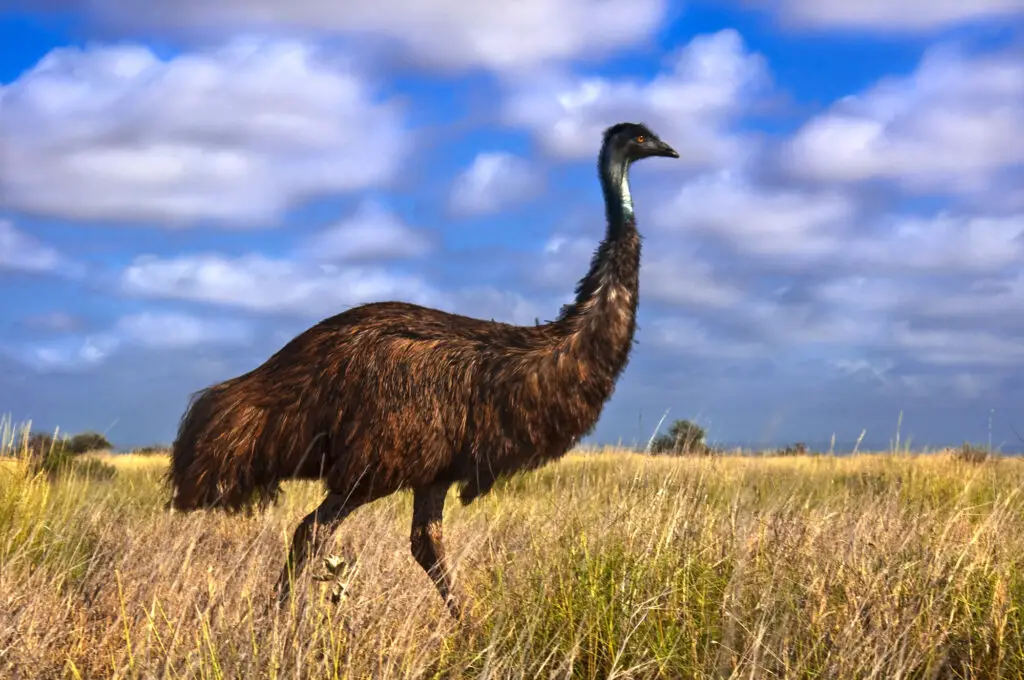In 1932, the Australian military took on a formidable foe that stood roughly six feet tall and could run up to 30 miles per hour. Machine guns and military tactics were no match for these creatures, and the Australian military eventually had to give up.
But these opponents weren’t some nefarious, unhinged animal. They were emus, the large, flightless birds native to Australia and even on the Australian coat of arms, but they were about to be involved in the Great Emu War.
How the Emu War Got Started
The issues started when the Australian government began a settlement program for soldiers returning to the country after World War I. The program started in 1915 and gave veterans plots of land to be worked into wheat and sheep farms. Around 5,030 veterans were given land in the program, and by 1920, the Australian government had purchased 90,000 hectares of land.
More land was needed to fill the need for the remaining veterans in the program, and the government began placing them in areas where the ground wasn’t easy to cultivate in Western Australia near Perth. In addition to the poor land conditions for farming, the Great Depression struck in 1929, making any yields from wheat unsustainable as the price of wheat plummeted.
But there was another pressing problem for these new farmers. Western Australia was home to tens of thousands of emus who had presided over the land before the farmers. They were tearing up wheat farms, breaking fences that were there to keep rabbits and dingos out, and eating the crop, making a bad situation even worse for the farmers.
Emus had been a protected species until 1922 when they were classified as “vermin.” By 1932, there were 20,000 emus destroying farms in the area. Farmers had been trying to cull the number of emus, but even with bounties on the birds, it had no effect. Nothing was stopping the emus and their rampage on the wheat farms.
Because the farmers didn’t have the necessary firepower or ammunition to correct the “problem,” they sought help from the Australian military. The army was sent out to deal with the 20,000 birds and decrease their numbers, but they soon found out that even with their superior firepower, they were dealing with a formidable foe.
The Start of the Great Emu War
Major G.P.W Meredith of the Seventh Heavy Battery of the Royal Australian Artillery began the assault against the emus on November 2, 1932, along with two other soldiers. Though it was a small force, the thought was that it would be an easy task as the two soldiers were armed with two Lewis light machine guns and 10,000 rounds of ammunition. There was even a film crew present to document the “success” of the operation.
The first battle involved 50 birds, but the birds scattered in all directions, and only a few emus were taken down. The emus survived being hit several times with bullets. Major Meredith even remarked that the emus had the “invulnerability of tanks.” Things only got more difficult for the Australian army soldiers from then on.
A couple of days later, 1,000 emus were spotted, and the soldiers opened fire with their machine guns. Even at point-blank range, only about 10 to 12 emus were hit, and then the machine gun jammed. The remaining birds scattered, leaving the military to answer questions from the media who had witnessed the spectacle. One soldier explained that the emus had a leader who was always on the lookout and would set the rest of the birds off to take cover in the brush at the first inclination of trouble.
The army next tried eliminating the emus from moving trucks, but that proved even more difficult because of the bird’s speed and maneuverability. It was also very difficult for the soldiers to aim from a moving vehicle and have any accuracy.
By November 8, 1932, and only six days into the operation, it was estimated that the soldiers had already used 2,500 rounds of ammunition, 25 percent of their total allotment. That 25 percent had only killed 200 emus out of the 20,000 birds in the area.
On November 13, 1932, a second campaign was started, which resulted in 40 emus killed. Results were a little better a month later when 100 emus were being shot weekly, but these numbers still did not dent the emus’ overall population.
Major Meredith calculated that it took ten bullets to kill one emu, which ultimately led the soldiers to be recalled. The emus had come out victorious in the Great Emu War. The story received unwelcome attention worldwide, and conservationists criticized the operation.
The Aftermath of the Great Emu War
But the danger to the emus wasn’t over. The Australian government decided to supply the needed ammunition to the local population, so they could try to solve the problem with the emus on their own. They succeeded through a bounty program, though more emus were taken than needed. In 1934, over the span of six months, 57,034 emus were killed across the country.
The emu was eventually put back on the protected animal list in 1999. Today, the population of emus is estimated to be around 600,000 to over 700,000 birds and is believed to be higher than before European settlement in the country.
Sources: Scientific American, History Extra, The Sydney Morning Herald



